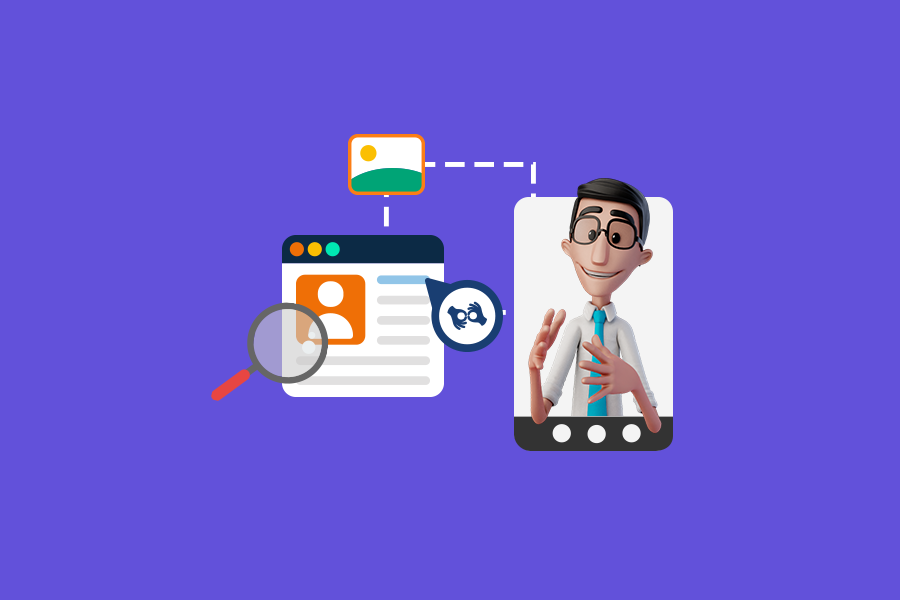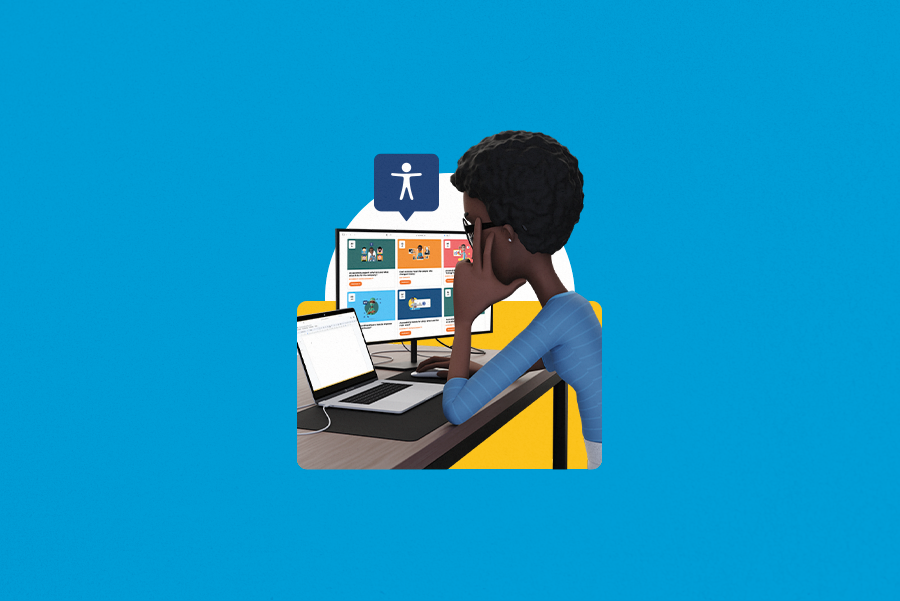
Accessibility trends for 2023: which are the main ones?

Currently in the United States, over 27% of the population lives with some kind of disability. Often, these individuals still suffer from a lack of accessibility in their daily lives, despite the existence of a law that advocates for its mandatory implementation, the Americans with Disabilities Act (ADA).
Another curiosity is that only 3% of American websites are accessible to people with disabilities. Given this scenario, it is very important for us as a society to work together to bring accessibility, diversity, and inclusion to all possible places.
Various future trends highlight accessibility as the protagonist, whether in physical spaces, online environments, or even in the job market. Do you know how to create a more accessible world through technology, communication, or good management practices? What are the accessibility trends for 2023?
Which are the accessibility trends for 2023?
The concern for accessibility has become a topic that is increasingly more present in the corporate world, especially because of the fight people with disabilities took on for their rights and opportunities in society. With that in mind, many new trends are popping up that put accessibility as the protagonist of some corporate strategies. Check it out!
E-accessibility
E-accessibility, also known as electronic accessibility, relates to how information and services available on the internet can be accessed by people with disabilities. After all, the virtual environment should be as accessible as the physical world, right?
Fortunately, many assistive technologies are being developed to make apps and websites more accessible. Some of the most commonly used features to promote accessibility in this context are video captions, image descriptions, virtual keyboards and translation tools for Sign Language, such as the Hand Talk Plugin.
Inclusive brands
Another rising trend is the search for inclusive brands that value diversity. Companies that position themselves inclusively have been standing out in the market and gaining consumer’s preference.
Being an inclusive brand not only means having physical accessibility in their spaces but also refers to representation in advertising campaigns and inclusion initiatives in their internal processes.
Artificial intelligence
Artificial intelligence (AI) has played an important role in promoting accessibility. Through AI, it is already possible to develop technologies, like virtual assistants and chatbots, that assist people with visual, hearing, or motor disabilities in their interactions with electronic devices.
On top of that, AI can also be applied to automatic translation of Sign Languages, allowing for communication with fewer barriers between deaf and hearing people.
Brand positioning
Another trend is the positioning of companies and organizations regarding inclusion and accessibility. Society increasingly expects and demands institutions to be transparent about their inclusive practices and commit to continuous improvement.
An example is prioritizing the development of clear policies to ensure diversity and inclusion in the organization’s day-to-day operations.
Professionals
The demand for professionals specialized in accessibility is also growing significantly. This should not come as a surprise, since it is a natural consequence as companies seek to adapt their products and services to be more accessible and meet the needs of people with disabilities.
Within this group of professionals, we can find experts in web development, graphic design, and people management, for example.
Entrepreneurship
As one thing leads to another, the demand for accessible and innovative solutions has been driving the growth of inclusive entrepreneurship. Entrepreneurs have been seeking business opportunities that promote accessibility, whether through the development of specific products and services or by adapting existing solutions.
Inclusive design
Inclusive design aims to create products, environments, and services that can be used by all people, regardless of their abilities or characteristics. A highly relevant area in this context is UX design, which considers the needs of all individuals, whether they have a permanent, temporary, or situational disability, from the beginning of the creation process.
Events
The organization of accessible events has become a very relevant trend. It is crucial for congresses, conferences, fairs, and other events to provide appropriate structures and resources to ensure the full participation of people with disabilities. This includes providing ASL interpreters, materials in accessible formats, physical accessibility in spaces, and other measures that enable the inclusion of all individuals.
Accessible spaces
Physical accessibility is also a very important concern. The trend is that more and more establishments and public spaces are designed and adapted to accommodate people with disabilities. Examples of improvements that can be implemented to ensure equal access for all individuals include access ramps, wide corridors, tactile floors, adapted restrooms, and elevators.
Inclusive campaigns
Awareness campaigns about the importance of inclusion and accessibility have also gained some significant prominence. Through marketing and communication actions, it is possible to increase awareness and engage society in favor of accessibility. Inclusive campaigns have the mission of challenging stereotypes, promoting empathy, and stimulating behavioral changes.
What is the concept of accessibility?
Although it may not be a well-known concept yet, it is quite simple to understand. Accessibility refers to ensuring that all individuals, regardless of their abilities, have full and equal access to products, services, information, and environments.
In summary, accessibility is about removing physical, communicational, and attitudinal barriers. It seeks to guarantee the participation and inclusion of all individuals in society in an autonomous manner.
What are the types of accessibility?
There are a few different types of accessibility, some of which we have already mentioned throughout the text. Now it’s time to understand them more deeply. Let’s go!
- Physical accessibility: it relates to the adaptation of spaces and physical environments to allow access for people with disabilities to all places. Some examples of how to apply it are access ramps, elevators, tactile floors, among others.
- Digital accessibility: promoting digital accessibility means ensuring that people with disabilities have access to all the information and services available on the web. This can be achieved through adapted resources such as screen readers, virtual keyboards, video captions, and automatic translators for Sign Languages.
- Communicational accessibility: it involves ensuring that communication is accessible to all individuals, breaking down communication barriers that are often invisible to society. This can be achieved with Sign Language interpreters, captions, audio description, and other resources.
- Social accessibility: it refers to the inclusion and full participation of people with disabilities in society, promoting equal opportunities, respecting differences, and eliminating prejudices and stigmas. Social accessibility can be achieved through public policies but also through our daily attitudes.
How does accessibility matter in the United States?
Despite the existence of the ADA, which guarantees rights to people with disabilities, the issue of accessibility in the USA still faces significant challenges. Many establishments, services, and public spaces are not adequately adapted, making it difficult for people with disabilities to participate in various aspects of daily life. Unfortunately, this is also not a priority for the majority of organizations.
However, there are also positive initiatives and progress being made towards accessibility! Awareness of the importance of inclusion has increased, and companies, organizations, and the government have sought to implement measures to make their products, services, and spaces more accessible.
Conclusion
We hope that this article has drawn your attention and motivation to contribute to accessibility in the spaces you frequent! If you want to stay updated on the latest news in accessibility, follow the Hand Talk Blog, where you can find incredible content about what’s new in the world of accessibility. Together, we can build a more inclusive and accessible future for all people.


